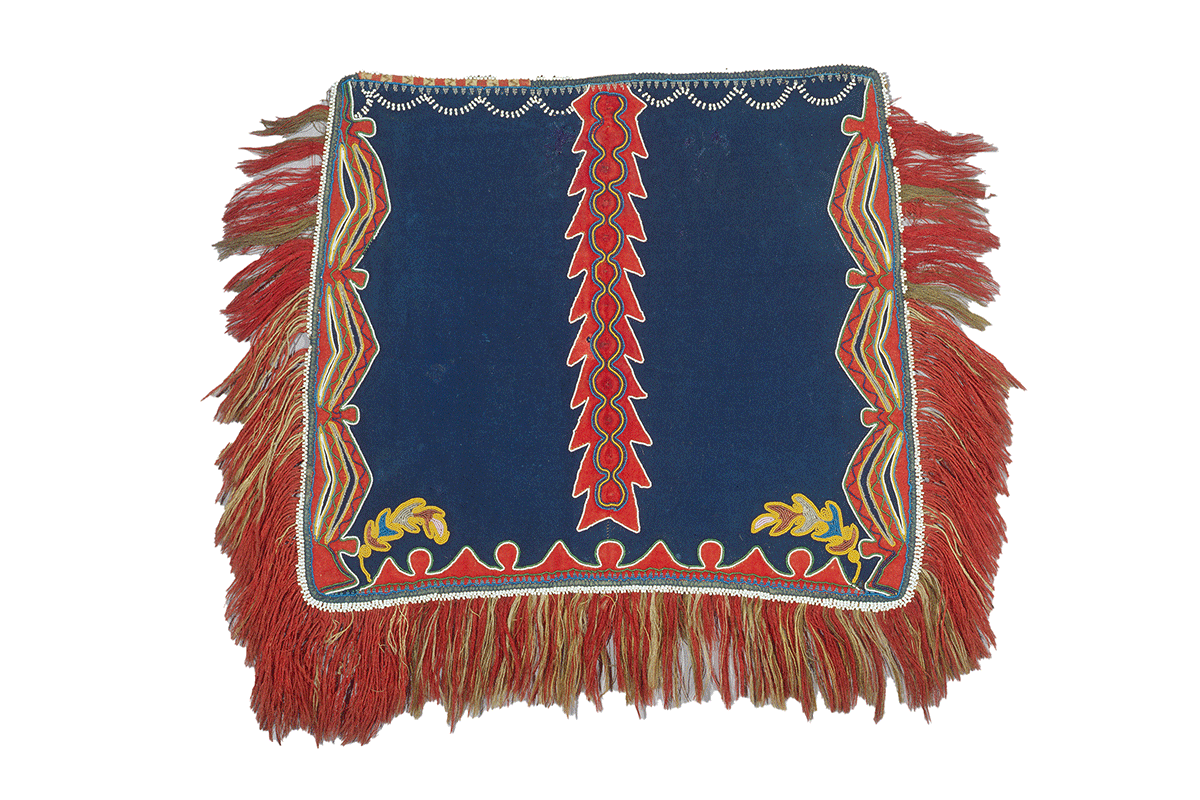Dog Blanket
Northwest Territories
ca. 1840-60
wool stroud cloth, glass beads, yarn fringe, cotton thread
height: 26"
width: 22"
Inventory # CW1597
Sold
PROVENANCE
Phillips, London, UK, July 3, 1991, lot 212
Donald Ellis Gallery, Dundas, ON
Pat Marshall Collection, Toronto, ON
The Dene First Nations of the Northwest Territories of Canada dress their sled dogs in richly ornate blankets. In the arresting example seen above, navy blue wool stroud cloth is elaborately embroidered with multi-coloured glass beads and cotton thread, the entire composition framed by a long red yarn fringe. Known as tuppie or klitserse, elaborately embellished blankets such as this exceptional example would have been used to dress teams of sled dogs just prior to reaching Euro-Canadian trading posts. The practice likely first appeared among Métis groups and later spread to the Dene and Cree First Nations. In many cases, bells were also affixed to these blankets, their bright sound announcing the impending arrival of the sled dog team. The Dene, who are also known as Slavey (a Cree exonym of the French and English words for slave), have been in contact with Euro-Canadian traders, settler and missionaries since the Scottish explorer Alexander Mackenzie led an expedition to the region in 1789. Soon after, trading posts were established all across the Northwest Territories which became a major hub for the Hudson’s Bay Company. Each of the materials used in the creation of this exceptional dog blanket would have been acquired through trade with Euro-Canadians. Given its considerable age as well as certain stylistic features, it is likely that the present blanket was made during the flourishing era of trade in the region between 1840-60.

